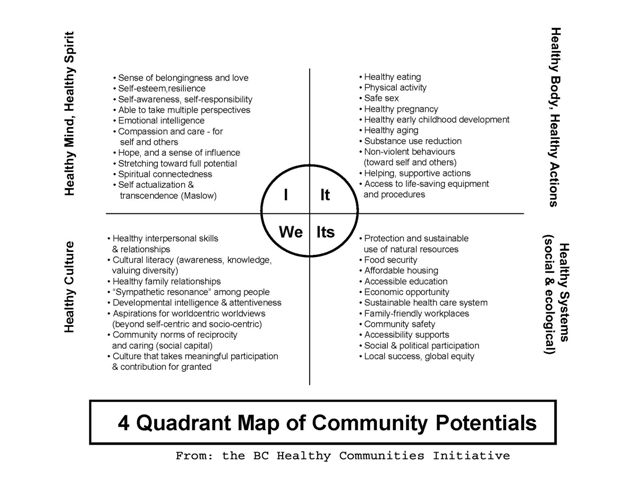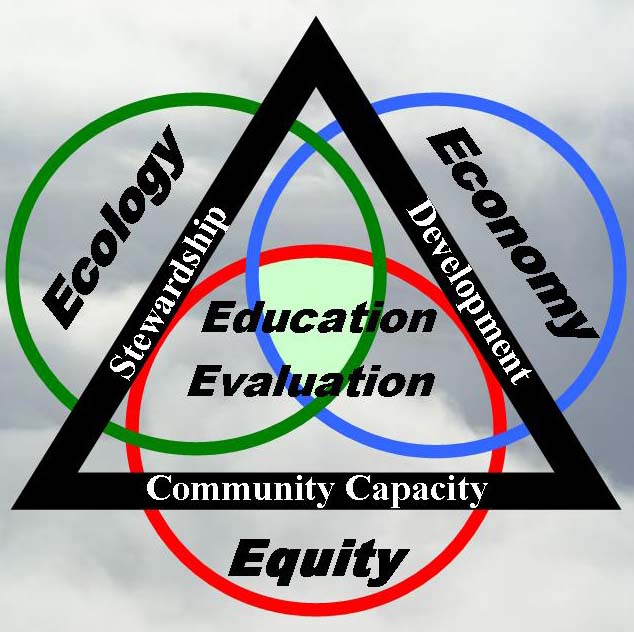|
We have found in our work
with communities that capacity building must be “integral” in
its structuring of components. Integral means comprehensive,
inclusive, balanced – not
leaving anything out. The Integral approach brings together
a myriad of disciplines and strategies into a dynamic whole,
such that they inform and complement each other from an
integrative point of view. This approach also integrates
the ‘exterior’,
practical aspects of life (such as ecology, economics and
social
systems) with
the ‘interior’, subtle aspects of humanity
(like psychology, culture and spirituality). By uniting
disciplines
and by acknowledging the role of interiority in society,
the integral approach includes more of reality in its embrace.
Thus, it offers a more comprehensive framework for understanding
coupled human-nature issues and more appropriate methods
of working with such issues. Employing an integral approach
to the development of planning strategies in our activities
has offered the following to clients with whom we
have worked.
- It
helps them to see from the whole.
- It’s
a way to address the whole person within the whole
community.
- It
illuminates the big picture and the details.
- It
addresses multiple determinants of health, well-being and
human development,
and their interconnections.
- It
acts as a map, making sure they don’t leave
out any important territory.
- It
acts as a container, a more comprehensive, inclusive, comprehensive
and balanced “bucket” for
holding and growing people’s capacity
building thinking and practice.
- It
offers a way to think about potential (and not
just problems).
- It
acts as a catalyst for optimum human development.
We have used “integral mapping” (see
example diagram below) to assist our work with many
communities because this process helps us and stakeholders
to see the many determinants of community dynamics more
holistically and with greater complexity. Capacity building
applying an integral perspective is a process that not
only promotes systemic change but also fosters collective
and personal change. In other words, community buy-in can
be achieved toward the development of change strategies
through an integral approach.

|

